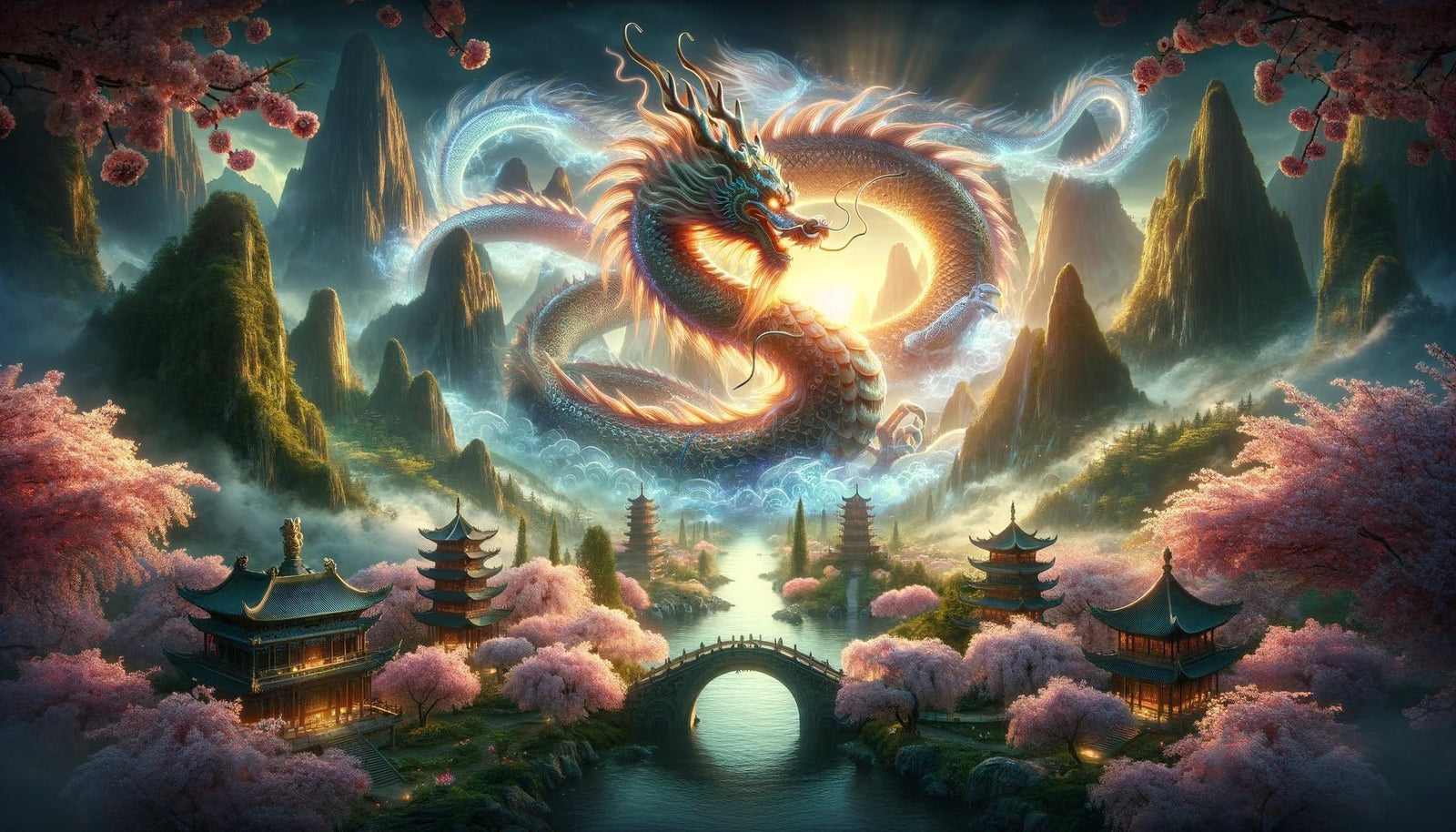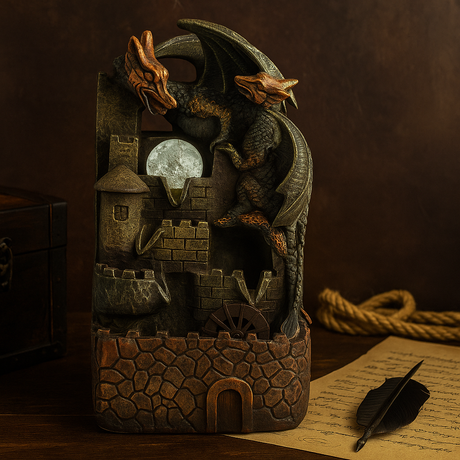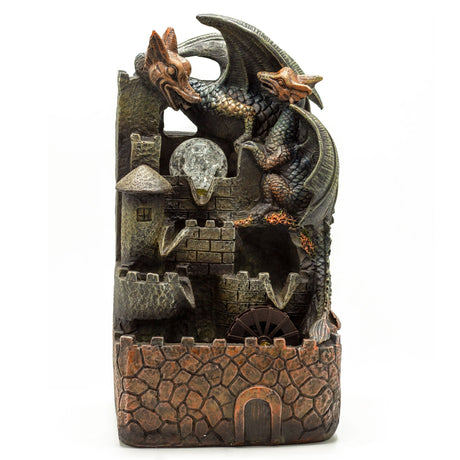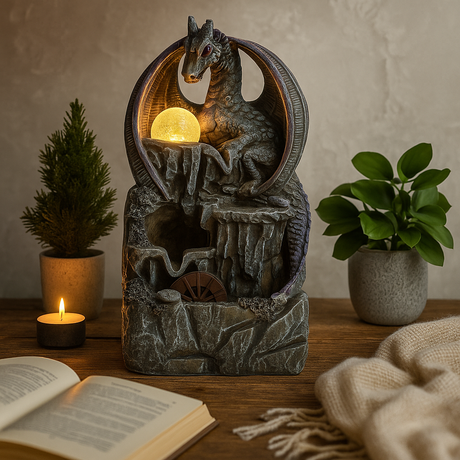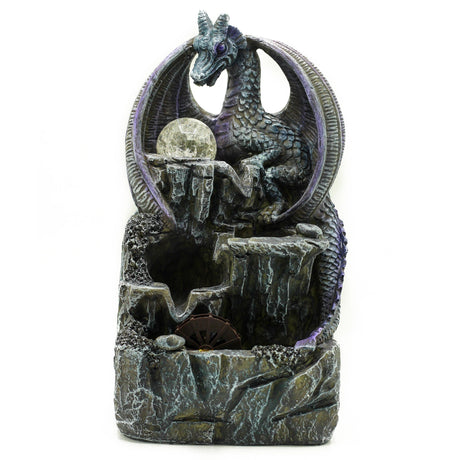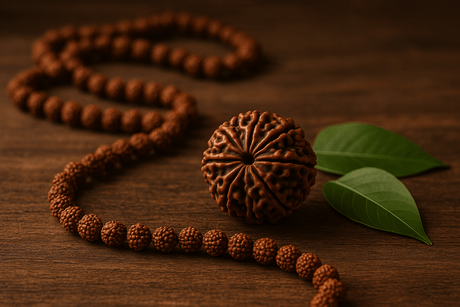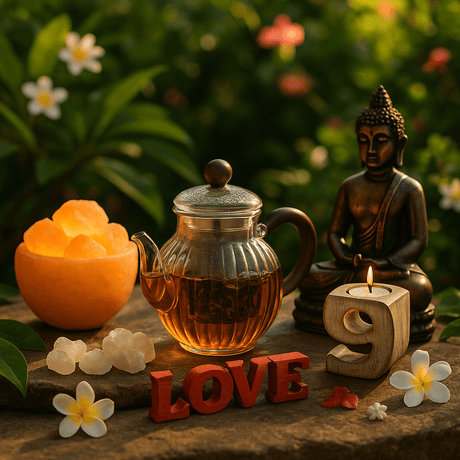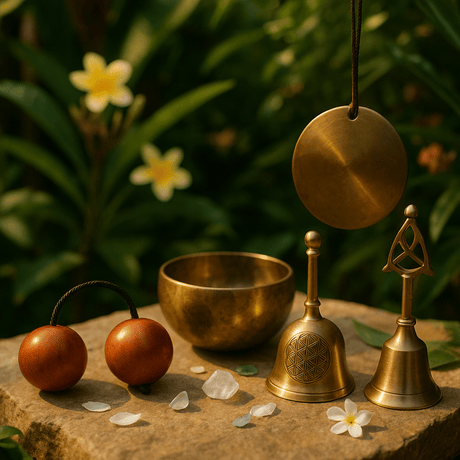In the rich tapestry of global mythology, few creatures capture the imagination as vividly as the dragon. Among these, the Chinese dragon stands out as a beacon of cultural significance and mythological depth. Known as 龙 (lóng) in Mandarin, this legendary creature weaves through the fabric of Chinese culture, embodying wisdom, power, and prosperity. Unlike its Western counterparts, often depicted as malevolent beasts, the Chinese dragon is a symbol of benevolence, courage, and success.
People born in the Year of the Dragon are believed to inherit these noble traits, embodying confidence, ambition, and a pioneering spirit.
Historical Background 🏮
The Chinese dragon's legacy is not merely a figment of imagination but a tapestry woven from the very threads of history and prehistoric evidence. This mythical creature, emblematic of qi energy and ancestral reverence, has evolved through millennia, deeply rooted in the cultural and spiritual fabric of China.
Prehistoric Beginnings and Archaeological Discoveries
- Ancient Carvings and Cultures. The journey of the Chinese dragon traces back to the neolithic age, with dragon-like motifs discovered in reddish-brown stone at the Chahai site, tied to the Xinglongwa culture (6200–5400 BC). This period marks the inception of dragon symbolism in Chinese society.
- Yangshao and Hongshan Cultures. Notable discoveries include a dragon statue from the fifth millennium BC in Henan, attributed to the Yangshao culture, and jade badges from the Hongshan culture (circa 4700–2900 BC), featuring coiled forms that prefigure the dragon's iconic serpentine image.
Symbolism and Evolution in Chinese Writing
- From Coiled Forms to Jade Amulets. The character for "dragon" in ancient Chinese script reflects a coiled, serpentine form, a motif that persisted into the Shang period through jade dragon amulets. These artifacts underline the dragon's central role in early Chinese culture as symbols of authority and spiritual might.
Dinosaurs and Dragons: A Paleontological Perspective
- "Dragon Bones" and Dinosaur Fossils. Ancient Chinese interpretations of unearthed dinosaur bones as dragon remains integrate these "dragon bones" into China's historical and medicinal narrative. The modern Chinese term for dinosaur, 恐龍 (kǒnglóng, 'terror dragon'), echoes this ancient association.
- The Mei long Discovery. The fossilized remains of Mei long, or 'sleeping dragon', found in a coiled sleeping posture, forge a compelling link between mythological dragons and their paleontological counterparts, illustrating the dragon's visual and symbolic resonance in Chinese culture.

Symbol of Power, Strength, and Good Luck: The Multifaceted Chinese Dragon 🌄
The Chinese dragon, a paramount symbol in the annals of Chinese mythology and culture, stands as a testament to the celestial authority, masculine energy (yang), and the auspicious powers it embodies. Beyond its representation of strength and good luck, the dragon's significance permeates various aspects of ancient Chinese society, from its rule over weather and water to its emblematic role in imperial authority.
Rule over Weather and Water
- Masters of the Elements. Chinese dragons are intrinsically linked with water and weather, revered as rulers over moving bodies of water such as rivers, seas, and waterfalls. This connection is not just symbolic but is deeply ingrained in popular religion and the collective consciousness of the Chinese people.
- The Dragon God as the Rainmaker. Often depicted in a more anthropomorphic form, the dragon god embodies the yang masculine power, crucial for generation and growth. As dispensers of rain, these celestial beings play a vital role in agriculture, ensuring prosperity and abundance.
- The Four Dragon Kings. Symbolizing the dominion over the Four Seas, the Dragon Kings of the East, South, West, and North Seas exemplify the dragon's comprehensive command over water-related phenomena. This association has historically led communities, especially those near water bodies, to worship and offer sacrifices to their local dragon king in times of natural imbalance, such as droughts or floods.
- Hydro-Engineering and the Dragon King. Historical figures, like the King of Wuyue, have been lauded as the "Dragon King" or the "Sea Dragon King" for their efforts in water management and protection against the sea's vagaries, further cementing the dragon's role in controlling water and weather.
Symbol of Imperial Authority
- The Dragon and Chinese Primogenitors. Legends recount that the earliest Chinese rulers, such as the Yellow Emperor and the Yan Emperor, were closely linked to dragons, with the Yellow Emperor ascending to heaven as a dragon. These myths have solidified the dragon's status as a symbol of imperial power and the divine right of emperors.
- Dragons and Emperors. Throughout Chinese history, dragons, particularly those with five claws on each foot, were exclusive symbols of the emperor. The dragon's image evolved through dynasties, from yellow or gold in the Qing dynasty to red in the Ming dynasty, adorning everything from the imperial throne, known as the Dragon Throne, to the national flag and the architectural marvels of imperial palaces and tombs.
- The Empress and the Phoenix. In a beautiful contrast, while the emperor was identified with the dragon, the Empress of China was often associated with the phoenix, creating a harmonious balance of power and symbolism within the imperial court.
Modern Practice and State Usage
- Continued Worship and Celebrations. The worship of the Dragon god persists, with sacrifices and processions especially vibrant during the fifth and sixth moons, marking the dragon's enduring significance in contemporary Chinese culture.
- The Dragon as a State Symbol. Beyond its mythological and imperial past, the dragon has also been a symbol of state authority, featured on national emblems and flags from the Qing dynasty to the Republic of China, and even in Vietnam, showcasing the dragon's far-reaching influence across Asia.
The Chinese dragon, therefore, embodies a complex matrix of meanings, from being a potent symbol of power, authority, and prosperity to its critical role in agriculture as a controller of weather and water. Its depiction across various mediums and practices underscores its undiminished reverence and the multifaceted nature of its symbolism in Chinese culture and beyond.

Cultural Significance: The Dragon in Festivals, Art, and Celebrations 🏮✨
The Chinese dragon, a symbol deeply embedded in the cultural fabric of China, plays a pivotal role in festivals, art, literature, and celebrations, marking its presence as a beacon of prosperity, strength, and cultural identity. Its representation spans across various forms and practices, underscoring the dragon's omnipresence in Chinese cultural expressions.
Festivals and Celebrations
- Dragon Boat Festival. Perhaps one of the most internationally recognized events featuring the dragon is the Dragon Boat Festival (Duanwu Festival). This annual celebration, occurring on the fifth day of the fifth lunar month, is highlighted by dragon boat races, where teams paddle intricately decorated boats with dragon heads and tails in a spirited competition. The festival commemorates the patriotic poet Qu Yuan, and the dragon boats are believed to ward off evil spirits and bring good luck to the community.
- Chinese New Year. The dragon dance is a quintessential part of Chinese New Year celebrations, embodying the power to bring good luck and drive away evil spirits. Enormous dragon figures, held aloft by dancers moving in synchronized patterns, snake through the streets amid fireworks, drums, and cymbals, captivating onlookers with their majestic and auspicious presence.
Representation in Art and Literature
- Classical Literature. In classic Chinese literature, dragons are often depicted as wise, benevolent, and powerful beings. Works such as the "Book of Songs" (Shijing) and the "Journey to the West" (Xiyouji) feature dragons in roles that range from guardians of celestial palaces to spiritual guides for heroes.
- Visual Arts. The dragon motif is prevalent in Chinese visual arts, including paintings, sculptures, and ceramics. Dragons can be found swirling around the columns of ancient temples, adorning scrolls with their auspicious presence, and intricately painted on porcelain vases, each depiction rich with symbolism and aesthetic value.
- Architectural Elements. Dragons also grace many architectural elements in China, from the Forbidden City in Beijing to the ornate dragon walls found in imperial gardens. These designs not only serve decorative purposes but also symbolize the protection and strength the dragon offers to these places.
Modern Interpretations
- Media and Pop Culture. In modern times, the dragon continues to be a popular figure in Chinese media and pop culture, appearing in movies, television shows, and animations. Its symbolic significance evolves with contemporary narratives, yet it remains a potent emblem of cultural heritage and identity.
- Public Art and Events. Contemporary public art installations and major events often feature dragons to highlight Chinese cultural pride and innovation. For example, dragon-themed artworks and floats are common sights during parades and international expositions, showcasing the dragon's enduring appeal.
The cultural significance of the dragon in China transcends mere mythology, embedding itself in the heart of Chinese societal celebrations, artistic expressions, and literary traditions. From the lively beats of the Dragon Boat Festival to the solemn beauty of a dragon-adorned scroll, the dragon continues to captivate the imagination, embodying the enduring spirit and rich cultural tapestry of China.
The Five Main Types of Dragons in Chinese Culture 🐉
In the intricate tapestry of Chinese mythology, dragons are not a monolith but a diverse spectrum of mythical creatures, each with its unique attributes, roles, and domains. The concept of the five main types of dragons in Chinese culture illustrates the complexity and depth of these legendary beings, highlighting their multifaceted significance in the natural world, spiritual realm, and imperial symbolism.
1. The Heavenly Dragon (天龙 - Tiān lóng)
- Guardians of the Celestial Realm. The Heavenly Dragons are considered the divine protectors of the celestial realm. They have the auspicious task of guarding the heavenly abodes and ensuring the orderly procession of the seasons. These dragons are often depicted amidst clouds, wielding the power to control rain and thunder, highlighting their connection to the weather and agricultural prosperity.

2. The Spiritual Dragon (神龙 - Shén lóng)
- Masters of Rain and Wind. The Spiritual Dragons possess the ability to control the wind and the rain, playing a crucial role in Chinese agriculture by ensuring timely rainfall and favorable weather conditions. Their mastery over these elements underscores the dragon's significance as a symbol of abundance, fertility, and harmony with nature.

3. The Earth Dragon (地龙 - Dì lóng)
- Protectors of Waterways and Soil. The Earth Dragons are believed to reside within the earth, controlling the waterways, rivers, and seas. They are also thought to influence the quality of the soil, making them essential for the prosperity of crops and the well-being of the land. Their connection to the earth element highlights the dragon's integral role in maintaining the balance and health of the natural world.

4. The Treasure Guardian Dragon (宝藏龙 - Bǎozàng lóng)
- Keepers of Wealth and Jewels. These dragons are said to guard vast treasures, hidden jewels, and profound secrets buried deep within the earth or in the depths of the ocean. The Treasure Guardian Dragons symbolize wealth, fortune, and the mysteries of the universe, inspiring tales of adventurers and heroes drawn to uncover the riches and wisdom these dragons protect.

5. The Dragon King (龙王 - Lóng wáng)
- Rulers of the Ocean and Rain: The Dragon Kings are perhaps the most renowned among the dragons, ruling over the four seas (East, South, West, and North Seas). Each Dragon King has his own palace and domain, commanding the aquatic creatures and presiding over rainfall. Their role is pivotal in rituals and ceremonies aimed at appeasing these mighty beings to ensure adequate rain for crops and to prevent floods or droughts. The Dragon King's festivals and temples dedicated to their worship reflect their esteemed position in Chinese culture.

These five types of dragons, with their distinct domains and powers, embody the rich symbolism and cultural importance of dragons in Chinese mythology. They represent the interconnectedness of the cosmos, the natural world, and the spiritual realm, serving as protectors, providers, and symbols of auspicious power in the vast narrative of Chinese folklore and tradition.
Dragon Dance 🎇
The Dragon Dance is a traditional Chinese performance that symbolizes good luck and prosperity. It's a highlight of festivals and celebrations, especially during Chinese New Year. Performers hold poles to maneuver a long dragon figure in a synchronized and flowing manner, mimicking the dragon's movements. This dance is believed to ward off evil spirits and attract positive energy, embodying the community's unity and strength. Accompanied by drums and cymbals, its lively execution is thought to protect and bring blessings to the community, making it a vibrant and auspicious ritual in Chinese culture.

The Dragon in Chinese Astrology: A Symbol of Charisma and Leadership 🏮
In Chinese astrology, the Dragon stands out as the only mythical creature among the twelve zodiac signs, marking it as uniquely powerful and significant. This sign embodies exceptionalism and transformation, reflecting its deep cultural and astrological importance.
Key Attributes
- Exceptionalism. The Dragon's mythical status elevates those born under this sign, imbuing them with charisma, ambition, and a natural inclination towards leadership.
- Transformation and Growth. Symbolizing yang energy, the Dragon encourages change, creativity, and personal growth.
- Courage and Vision. Dragons are known for their fearless approach to life and visionary goals, often leading them to significant achievements.
Cultural Significance
- Symbol of Prosperity. Revered for its power and good fortune, the Dragon year is considered auspicious, attracting success and prosperity.
- Impact on Life. Dragons are passionate and driven individuals, excelling in both personal and professional spheres due to their innovative and determined nature.
The Dragon's presence in the zodiac highlights its role as a celestial symbol of strength and potential, shaping the personalities and destinies of those it represents.

Conclusion 🐉
Venturing through the rich tapestry of Chinese culture, the Dragon stands as a symbol of myth, power, and prosperity, its legacy stretching from ancient origins to modern celebrations. Through the vibrant Dragon Dance, the celestial nuances of astrology, and the esteemed depiction in art and festivals, the Dragon embodies charisma, leadership, and ambition. Each of the five Dragon types — Heavenly, Spiritual, Earth, Treasure Guardian, and Dragon King — unveils a unique aspect of the natural and spiritual world, influencing everything from weather to imperial authority. This journey through the Dragon's multifaceted roles captures the essence of its enduring significance, marking it as an indelible symbol of cultural heritage and mystical majesty.
